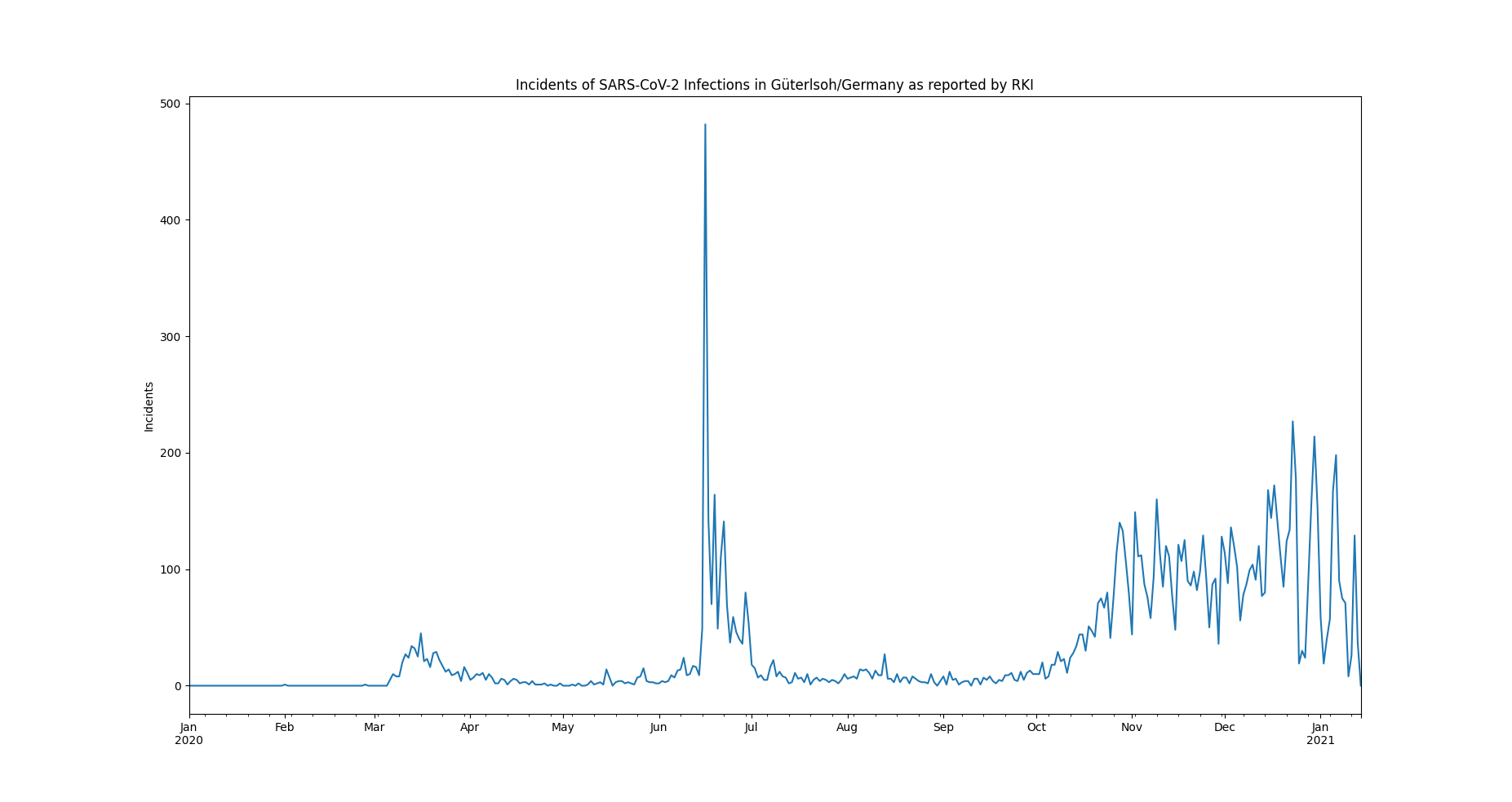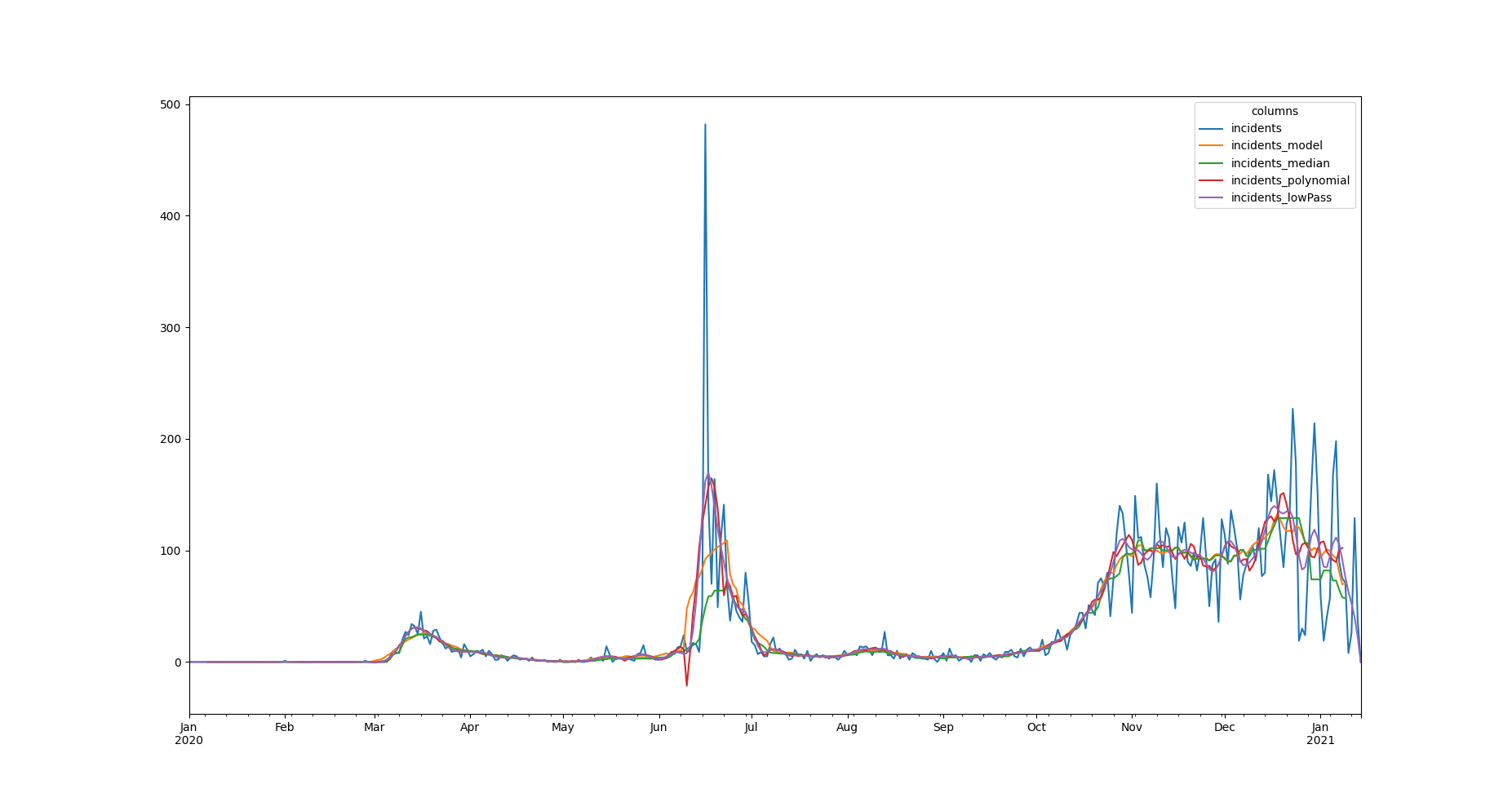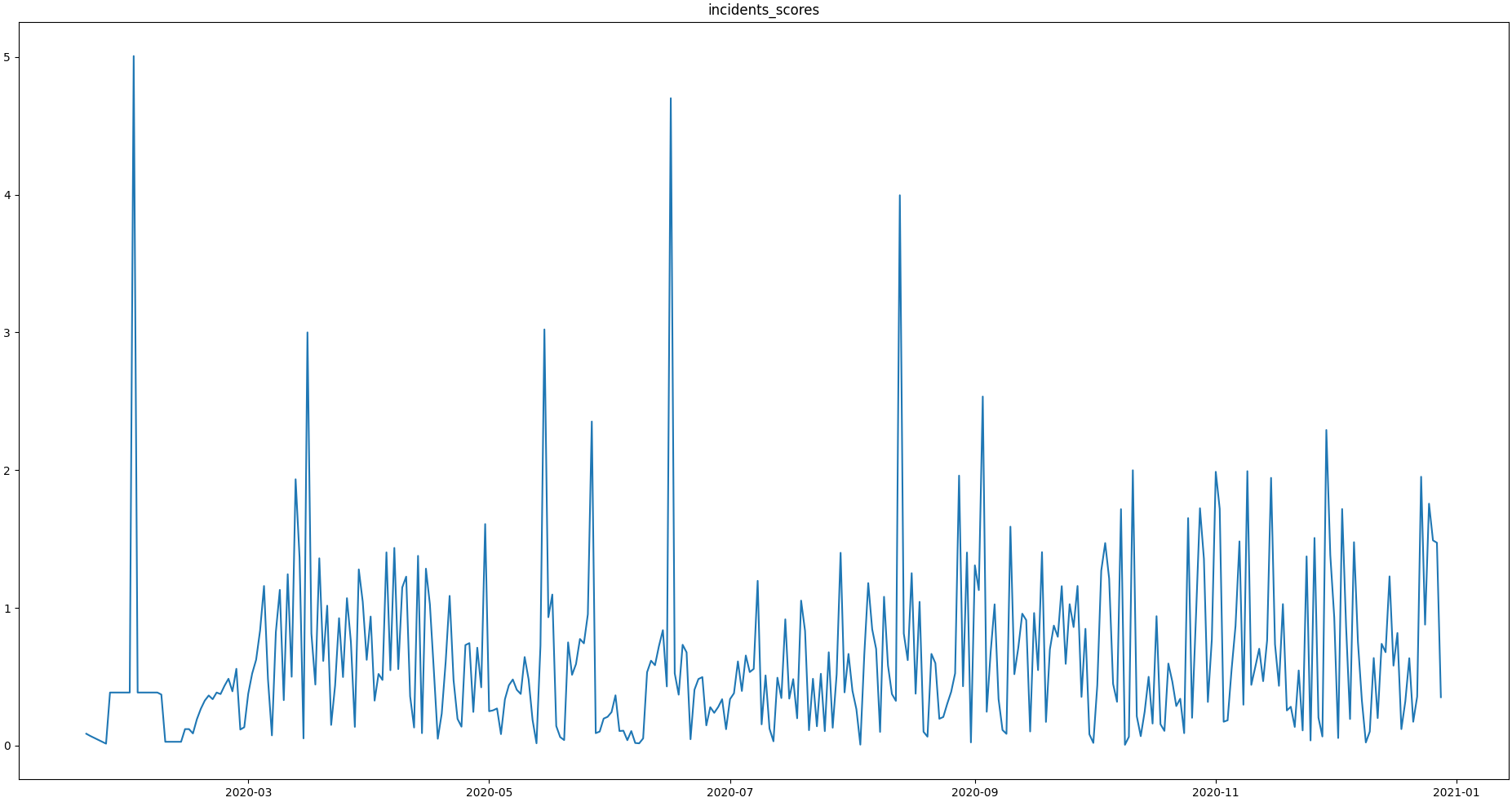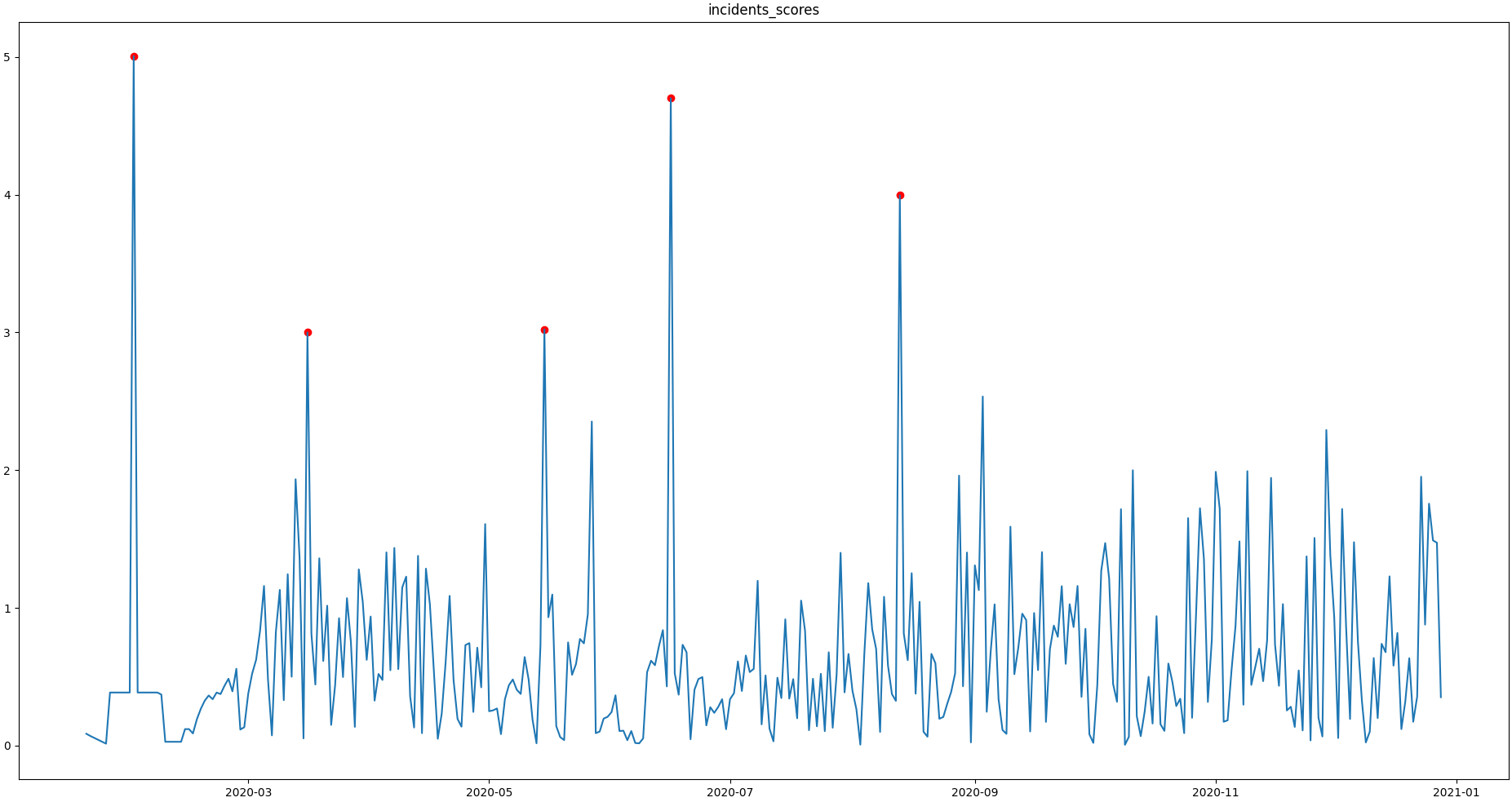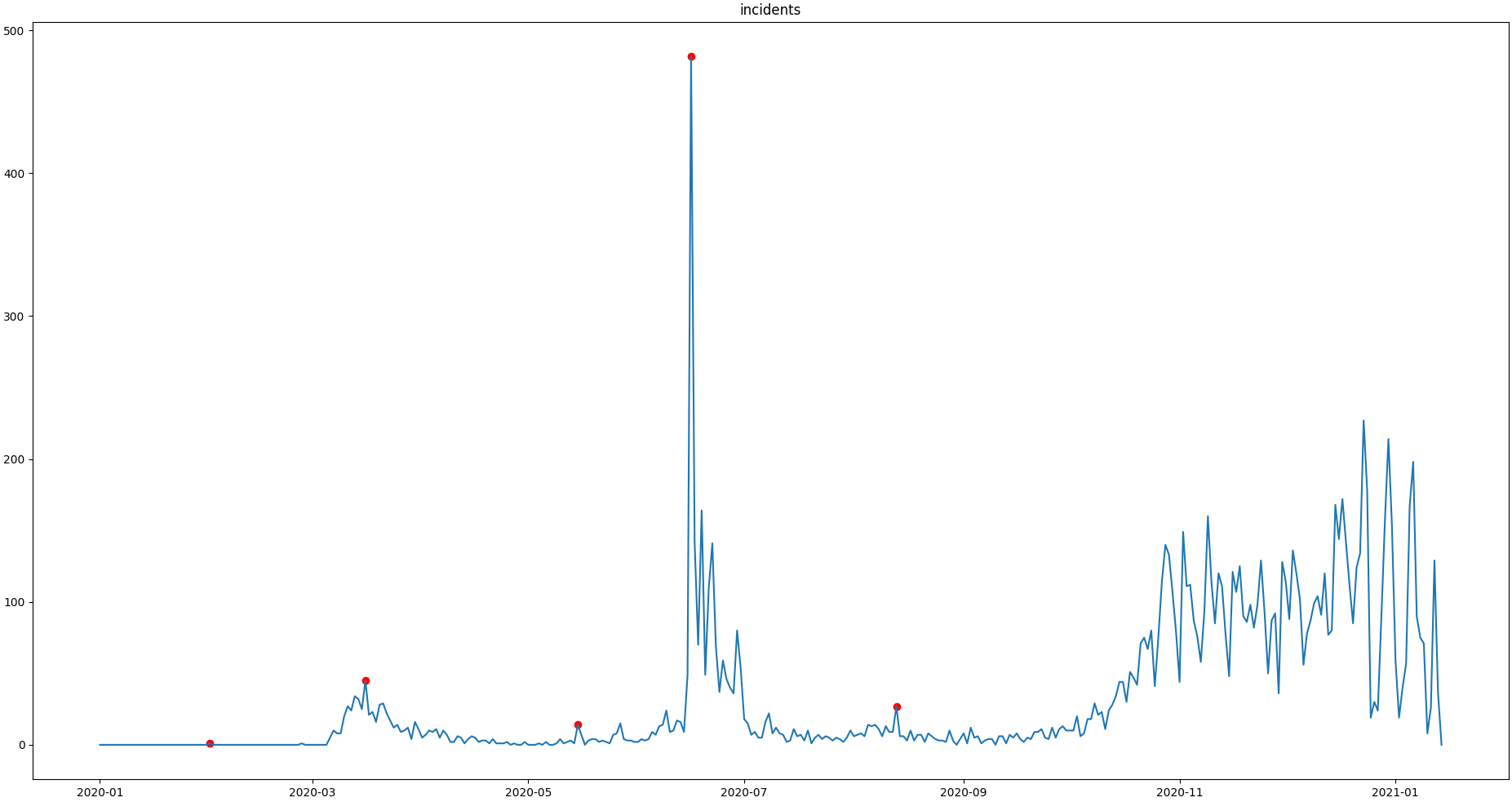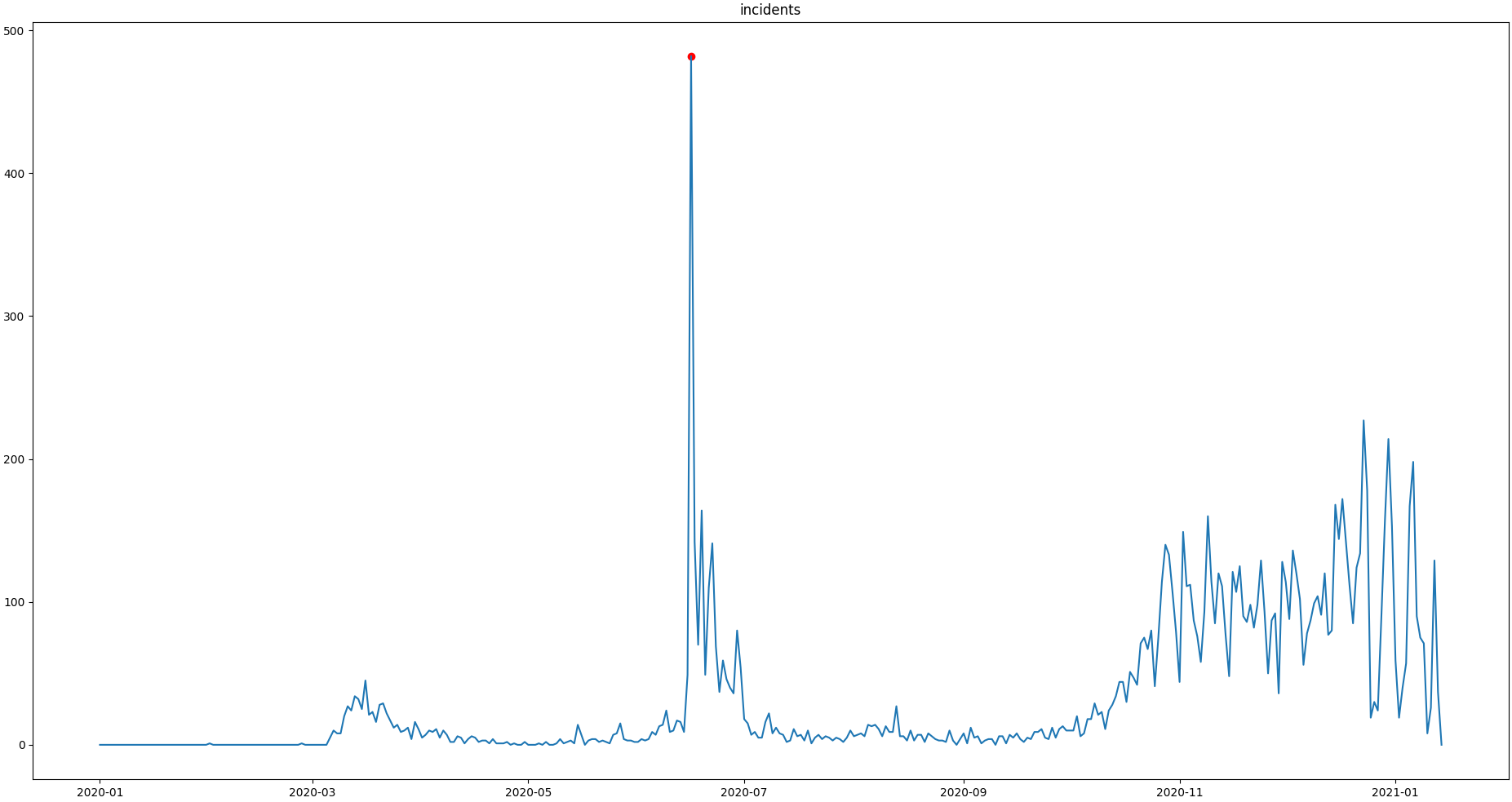-
Peter Lünenschloß authoredb3bd6101
- Outlier Detection and Flagging
- Preparation
- Data
- Initialisation
- Modelling
- Rolling Mean
- Rolling Median
- Polynomial Fit
- Custom Models
- Evaluation and Visualisation
- Residues and Scores
- Residues
- Scores
- Optimization by Decomposition
- Setting and correcting Flags
- Flagging the Scores
- Projecting Flags
- Additional Conditions
- Unflagging
- Including multiple Conditions
Outlier Detection and Flagging
The tutorial aims to introduce the usage of saqc methods in order to detect outliers in an uni-variate set up.
The tutorial guides through the following steps:
-
We checkout and load the example data set. Subsequently, we initialise an :py:class:
SaQC <saqc.core.core.SaQC>object. -
We will see how to apply different smoothing methods and models to the data in order to obtain usefull residue variables.
-
We will see how we can obtain residues and scores from the calculated model curves.
-
Finally, we will see how to derive flags from the scores itself and impose additional conditions, functioning as correctives.
Preparation
Data
The example data set is selected to be small, comprehendable and its single anomalous outlier can be identified easily visually:
It can be downloaded from the saqc git repository.
The data represents incidents of SARS-CoV-2 infections, on a daily basis, as reported by the RKI in 2020.
In June, an extreme spike can be observed. This spike relates to an incidence of so called "superspreading" in a local meat factory.
For the sake of modelling the spread of Covid, it can be of advantage, to filter the data for such extreme events, since they may not be consistent with underlying distributional assumptions and thus interfere with the parameter learning process of the modelling. Also it can help to learn about the conditions severely facilitating infection rates.
To introduce into some basic SaQC workflows, we will concentrate on classic variance based outlier detection approaches.
Initialisation
We initially want to import the data into our workspace. Therefore we import the pandas library and use its csv file parser pd.read_csv.
import pandas as pd
i_data = pd.read_csv(data_path)The resulting i_data variable is a pandas data frame
object. We can generate an SaQC object directly from that. Beforehand we have to make sure, the index
of ì_data is of the right type.
i_data.index = pd.DatetimeIndex(i_data.index)Now we do load the saqc package into the workspace and generate an instance of saqc <saqc.core.core.SaQC> object,
that refers to the loaded data.
import saqc
i_saqc = saqc.SaQC(i_data)With evaluating :py:attr:saqc.fields, we can check out the variables, present in the data.
>>> saqc.fields
['incidents']So, the only data present, is the incidents dataset. We can have a look at the data and obtain the above plot through
the method :py:meth:saqc.show <saqc.core.core.SaQC.show>:
>>> saqc.show('incidents')Modelling
First, we want to model our data in order to obtain a stationary, residuish variable with zero mean.
Rolling Mean
Easiest thing to do, would be, to apply some rolling mean
model via the method :py:func:saqc.roll <Functions.saqc.roll>.
>>> i_saqc = i_saqc.roll(field='incidents', target='incidents_mean', func=np.mean, winsz='13D')The :py:attr:field parameter is passed the variable name, we want to calculate the rolling mean of.
The :py:attr:target parameter holds the name, we want to store the results of the calculation to.
The :py:attr:winsz parameter controlls the size of the rolling window. It can be fed any so called date alias string. We chose the rolling window to have a 13 days span.
Rolling Median
You can pass arbitrary function objects to the :py:attr:func parameter, to be applied to calculate every single windows "score".
For example, you could go for the median instead of the mean. The numpy library provides a median function
under the name ǹp.median. We just calculate another model curve for the "incidents" data with the np.median function from the numpy library.
>>> i_saqc = i_saqc.roll(field='incidents', target='incidents_median', func=np.median, winsz='13D')We chose another :py:attr:target value for the rolling median calculation, in order to not override our results from
the previous rolling mean calculation.
The :py:attr:target parameter can be passed to any call of a function from the
saqc functions pool and will determine the result of the function to be written to the
data, under the fieldname specified by it. If there already exists a field with the name passed to target,
the data stored to this field will be overridden.
We will evaluate and visualize the different model curves later. Beforehand, we will generate some more model data.
Polynomial Fit
Another common approach, is, to fit polynomials of certain degrees to the data.
:py:class:SaQC <saqc.core.core.SaQC> provides the polynomial fit function :py:func:saqc.fitPolynomial <Functions.saqc.fitPolynomial>:
>>> i_saqc = i_saqc.fitPolynomial(field='incidents', target='incidents_polynomial', polydeg=2 ,winsz='13D')It also takes a :py:attr:winsz parameter, determining the size of the fitting window.
The parameter, :py:attr:polydeg refers to the size of the rolling window, the polynomials get fitted to.
Custom Models
If you want to apply a completely arbitrary function to your data, without pre-chunking it by a rolling window,
you can make use of the more general :py:func:saqc.processGeneric <Functions.saqc.process> function.
Lets apply a smoothing filter from the scipy.signal module. We wrap the filter generator up into a function first:
from scipy.signal import filtfilt, butter
def butterFilter(x, filter_order, nyq, cutoff, filter_type):
b, a = butter(N=filter_order, Wn=cutoff / nyq, btype=filter_type)
return filtfilt(b, a, x)This function object, we can pass on to the :py:func:saqc.processGeneric <Functions.saqc.process> methods :py:attr:func argument.
(Here can
be found some more information on the generic Functions)
i_saqc = i_saqc.processGeneric(field='incidents', target='incidents_lowPass', func=lambda x: butterFilter(x, cutoff=0.1, nyq=0.5, filter_order=2))Evaluation and Visualisation
Now, we can evaluate the data processing functions qeued to the :py:class:SaQC <saqc.core.core.SaQC> object with the
:py:func:saqc.evaluate <saqc.core.core.SaQC.evaluate> method.
>>> i_saqc = i_saqc.evaluate()This will give us an updated :py:class:SaQC <saqc.core.core.SaQC> object, in wich the internal data informations
are updated according to the methods we stacked to be applied.
We can obtain those updated informations by generating a pandas dataframe
representation of it, with the :py:meth:saqc.getResult <saqc.core.core.SaQC.getResult> method:
>>> data = i_saqc.getResult()[0]To see all the results obtained so far, plotted in one figure window, we make use of the dataframes plot method.
>>> data.plot()Residues and Scores
Residues
We want to evaluate the residues of one of our models model, in order to score the outlierish-nes of every point. Therefor we just stick to the initially calculated rolling mean curve.
First, we retrieve the residues via the :py:func:saqc.processGeneric <Functions.saqc.process> method.
This method always comes into play, when we want to obtain variables, resulting from basic algebraic
manipulations of one or more input variables.
For obtaining the models residues, we just subtract the model data from the original data and assign the result
of this operation to a new variable, called incidents_residues. This Assignment, we, as usual,
control via the :py:attr:target parameter.
i_saqc = i_saqc.procesGeneric(['incidents', 'incidents_model'], target='incidents_residues', func=lambda x, y: x - y)Scores
Next, we score the residues simply by computing their Z-scores.
The Z-score of a point x, relative to its surrounding D, evaluates to Z(x) = \frac{x - \mu(D)}{\sigma(D)}.
So, if we would like to roll with a window of a fixed size of 27 periods through the data and calculate the Z-score
for the point lying in the center of every window, we would define our function z_score:
z_score = lambda D: abs((D[14] - np.mean(D)) / np.std(D)) And subsequently, use the :py:func:saqc.roll <Functions.saqc.roll> method to make a rolling window application with the scoring
function:
i_saqc = i_saqc.roll(field='incidents_residues', target='incidents_scores', func=z_scores, winsz='13D')Optimization by Decomposition
There are 2 problems with the attempt presented above.
First, the rolling application of the customly
defined function, might get really slow for large data sets, because our function z_scores does not get decomposed into optimized building blocks.
Second, and maybe more important, it relies heavily on every window having a fixed number of values and a fixed temporal extension.
Otherwise, D[14] might not always be the value in the middle of the window, or it might not even exist,
and an error will be thrown.
So the attempt works fine, only because our data set is small and strictly regularily sampled. Meaning that it has constant temporal distances between subsequent meassurements.
In order to tweak our calculations and make them much more stable, it might be useful to decompose the scoring
into seperate calls to the :py:func: saqc.roll <Functions.saqc.roll> function, by calculating the series of the
residues mean and standard deviation seperately:
i_saqc = i_saqc.roll(field='incidents_residues', target='residues_mean', winsz='27D',
func=np.mean)
i_saqc = i_saqc.roll(field='incidents_residues', target='residues_std', winsz='27D',
func=np.std)With huge datasets, this will be noticably faster, compared to the method presented initially,
because saqc dispatches the rolling with the basic numpy statistic methods to an optimized pandas built-in.
Also, as a result of the :py:func: saqc.roll <Functions.saqc.roll> assigning its results to the center of every window,
all the values are centered and we dont have to care about window center indices when we are generating
the Z-Scores from the two series.
We simply combine them via the
:py:func:saqc.processGeneric <Functions.saqc.generic> method, in order to obtain the scores:
i_saqc = i_saqc.processGeneric(fields=['incidents_residues','incidents_mean','incidents_std'], target='incidents_scores', func=lambda x,y,z: abs((x-y) / z))Lets evaluate the residues calculation and have a look at the resulting scores:
i_saqc = i_saqc.evaluate()
i_saqc.show('incidents_scores')Setting and correcting Flags
Flagging the Scores
We can now implement the common rule of thumb,
that any Z-score value above 3 may indicate an outlierish data point,
by applying the :py:func:saqc.flagRange <Functions.saqc.flagRange> method with a :py:attr:max value of 3.
i_saqc = i_saqc.flagRange('incidents_scores', max=3).evaluate()Now flags have been calculated for the scores:
>>> i_saqc.show('incidents_scores')Projecting Flags
We now can project those flags onto our original incidents timeseries:
>>> i_saqc = i_saqc.flagGeneric(field=['incidents_scores'], target='incidents', func=lambda x: isFlagged(x))Note, that we could have skipped the range flagging step, by including the cutting off in our generic expression:
>>> i_saqc = i_saqc.flagGeneric(field=['incidents_scores'], target='incidents', func=lambda x: x > 3)Lets check out the results:
>>> i_saqc = i_saqc.evaluate()
>>> i_saqc.show('incidents')Obveously, there are some flags set, that, relative to their 13 days surrounding, might relate to minor incidents spikes, but may not relate to superspreading events we are looking for.
Especially the left most flag seems not to relate to an extreme event at all. This overflagging stems from those values having a surrounding with very low data variance, and thus, evaluate to a relatively high Z-score.
There are a lot of possibilities to tackle the issue. In the next section, we will see how we can improve the flagging results by incorporating additional domain knowledge.
Additional Conditions
In order to improve our flagging result, we could additionally assume, that the events we are interested in, are those with an incidents count that is deviating by a margin of more than 20 from the 2 week average.
This is equivalent to imposing the additional condition, that an outlier must relate to a sufficiently large residue.
Unflagging
We can do that posterior to the preceeding flagging step, by removing some flags based on some condition.
In orer want to unflag those values, that do not relate to
sufficiently large residues, we assign them the :py:const:unflagged <saqc.constants.UNFLAGGED> flag.
Therefore, we make use of the :py:func:saqc.flagGeneric <Functions.saqc.flag> method.
This method usually comes into play, when we want to assign flags based on the evaluation of logical expressions.
So, we check out, which residues evaluate to a level below 20, and assign the
flag value for :py:const:unflagged <saqc.constants.UNFLAGGED>. This value defaults to
to -np.inf in the default translation scheme, wich we selected implicitly by not specifying any special scheme in the
generation of the :py:class:SaQC <saqc.core.core.SaQC> object in the beginning.
>>> i_saqc = i_saqc.flagGeneric(field=['incidents','incidents_residues'], func=lambda x,y: isflagged(x) & (y < 50), flag=-np.inf)Notice, that we passed the desired flag level to the :py:attr:flag keyword in order to perform an
"unflagging" instead of the usual flagging. The :py:attr:flag keyword can be passed to all the functions
and defaults to the selected translation schemes :py:const:bad <saqc.constants.BAD> flag level.
Evaluation and showing proofs the tweaking did in deed improve the flagging result:
>>> i_saqc = i_saqc.evaluate()
>>> i_saqc.show()Including multiple Conditions
If we do not want to first set flags, only to remove the majority of them in the next step, we also
could circumvent the unflagging step, by adding to the call to :py:func:saqc.flagRange <Functions.saqc.flagRange> the condition for the residues having to be above 20
>>> i_saqc = i_saqc.flagGeneric(field=['incidents_scores', 'incidents_residues'], target='incidents', func=lambda x, y: (x > 3) & (y > 20))
>>> i_saqc = i_saqc.evaluate()
>>> i_saqc.show()